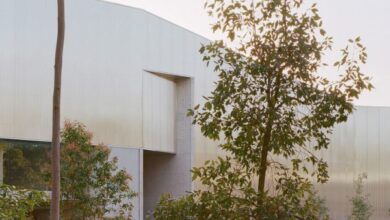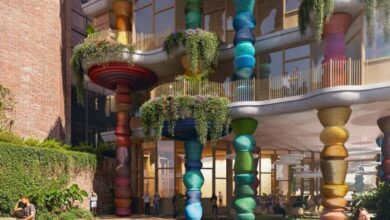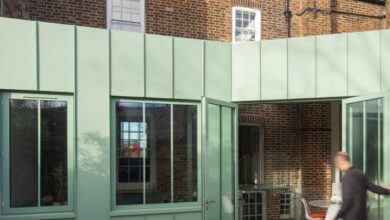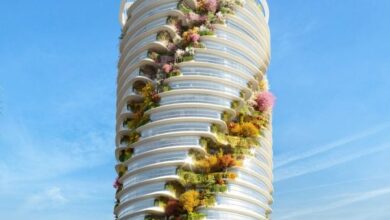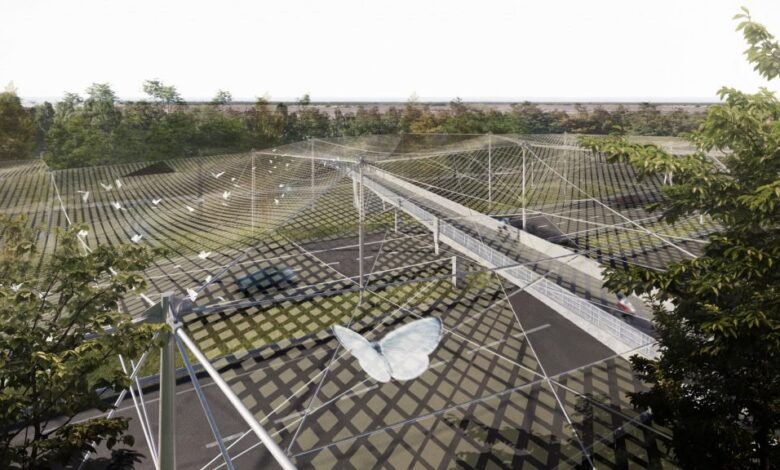
The Butterfly Effect creates a bridge for insects to cross the road
[ad_1]
VenhoevenCS, DS Landschapsarchitecten and Studio Solarix have designed the Butterfly Effect, a proposal to stretch a treetop-level web over a Dutch motorway to provide insects with cleaner air above roads.
Currently a conceptual design, the project is a proposal for the Our Energy Our Landscape design challenge organised by Kunstloc Brabant, a cultural programme in the Netherlands’ North Brabant province.
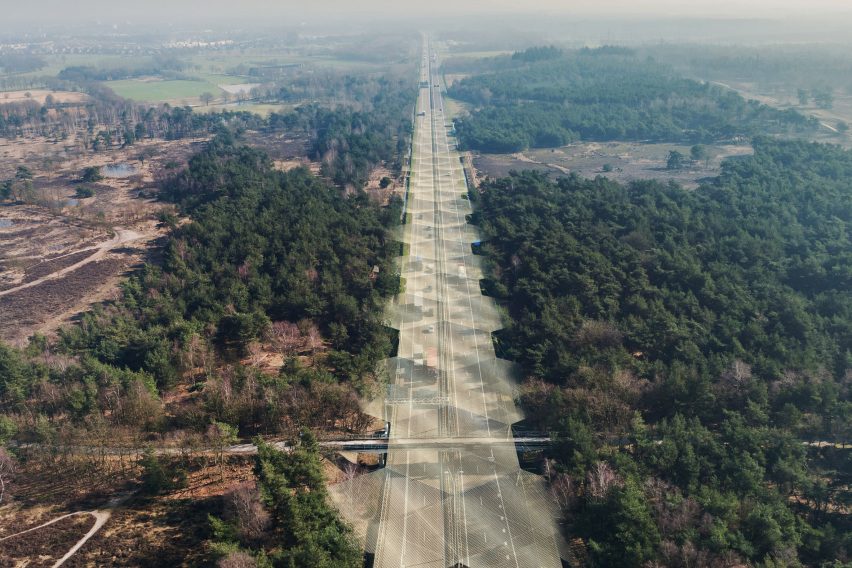
Dutch design studio VenhoevenCS collaborated with landscape architecture agency DS Landschapsarchitecten and solar energy firm Studio Solarix to imagine a membrane of solar panels that could span a road.
Called the Butterfly Effect, the web could be suspended across the A67 motorway on the Strabrechtse Heide, a natural heathland area in North Brabant, although its inventors said the concept could be replicated anywhere.
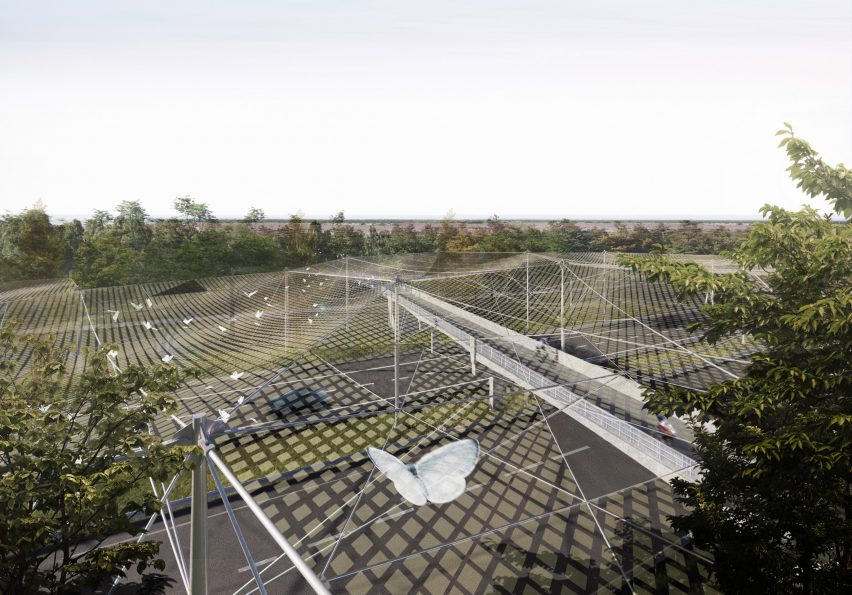
Connected to trees on each side by steel columns, the web would stretch across the motorway and provide clearer air space for insects to cross the road above the traffic below.
“A motorway forms a huge barrier for many insects as the vortexes and currents in the air caused by traffic are deadly to them,” VenhoevenCS architect and director Cécilia Gross told Dezeen.
“Research has shown that many insects, such as the Alcon Blue butterfly, only dare to cross the motorway when there is a traffic jam and the air is still,” she added.
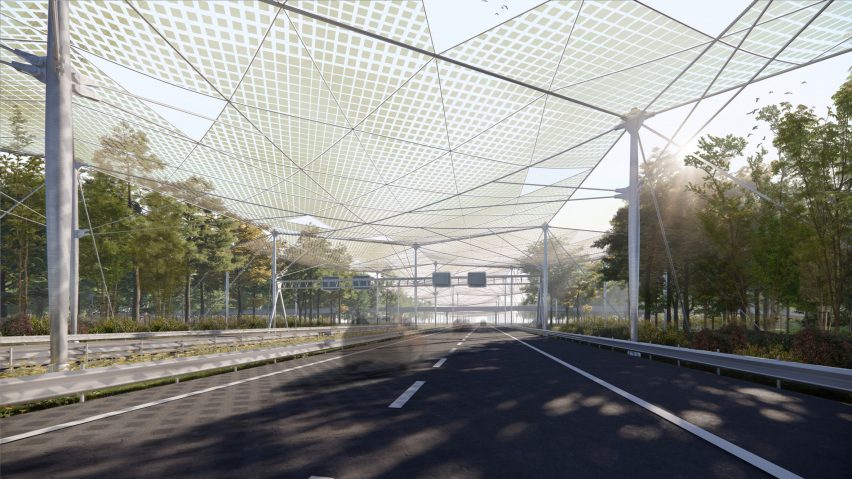
According to VenhoevenCS, 85 per cent of the world’s food is dependent on insect pollination.
The Butterfly Effect would reduce the disruptive air currents produced by cars and encourage insects to travel across the road and pollinate plants.
Made up of hexagonal photovoltaic modules, the web’s design is informed by a bee’s honeycomb and would create a large surface area of solar panels that could convert sunlight into energy.
The designers expect that the technology for translucent photovoltaic surfaces will soon be available.
“The first generation of these energy-generating surfaces will consist of a thin translucent photovoltaic membrane,” said Gross.
“Looking ahead we expect that developments mean that the next generation of these surfaces could see them being created from textiles, given the textile industry is already working on energy-generating fibres.”
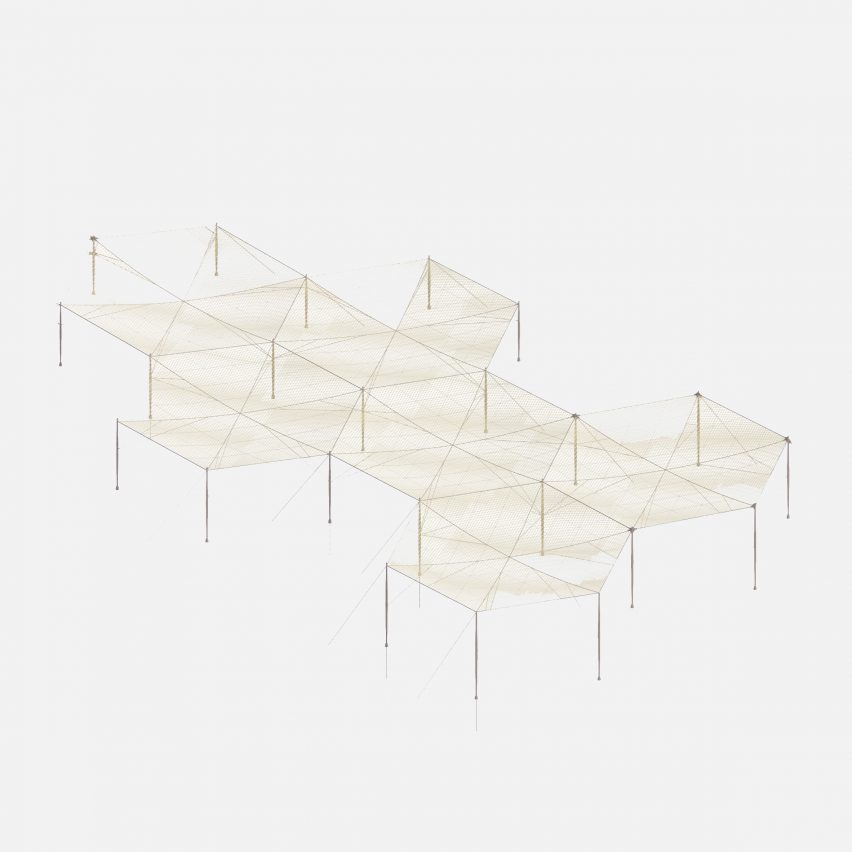
Pollution would also be decreased as the nitrogen and particulates released by traffic would remain in the roadside woodland and act as a fertilizer for the soil.
This enriched soil would encourage further tree and vegetation growth, leading to a quieter motorway with noise reduced by dense woodland.
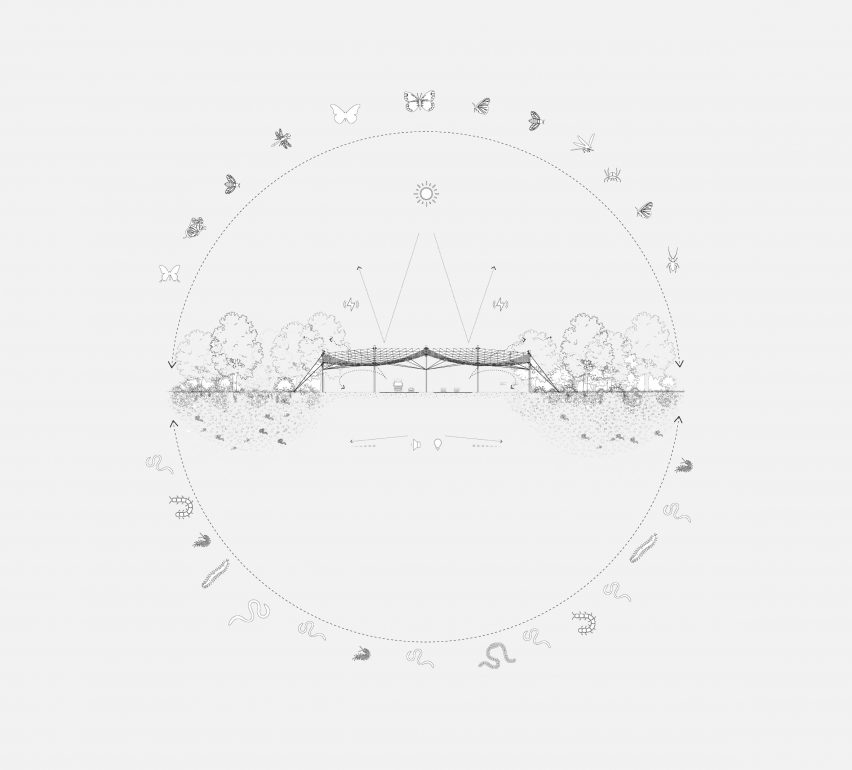
Gross explained that the Butterfly Effect’s hexagonal structure means that the web could grow in any direction and could become a wider tool in urban landscapes such as above railways.
“It could be used as a blueprint in places where there is noise pollution, a lot of particulate matter or a high energy demand,” said Gross.
“It will become a symbol of the type of energy generation that should be a priority, something that gives a helping hand to small ecosystems and in doing so contributes to a large-scale approach to climate change and biodiversity loss.”
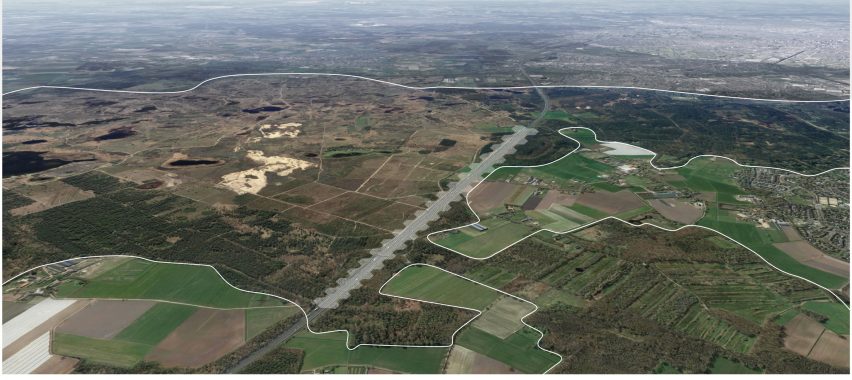
VenhoevenCS is a Dutch design office founded by Ton Venhoeven in 1995 with a focus on sustainable architecture. The firm recently revealed designs for a timber aquatic centre for the Paris 2024 Olympics.
DS Landschapsarchitecten is an Amsterdam-based architecture and urban planning company. Studio Solarix is a solar energy company, also based in the Dutch capital.
Other sustainable architecture includes a university building in Georgia, America, topped by a giant photovoltaic canopy.
The renderings are courtesy of VenhoevenCS, DS Landschaparchitecten and Studio Solarix.
[ad_2]


